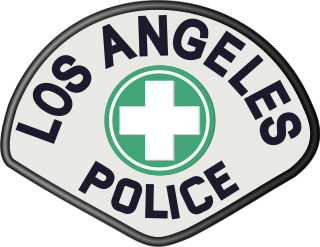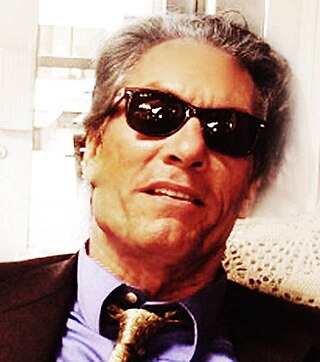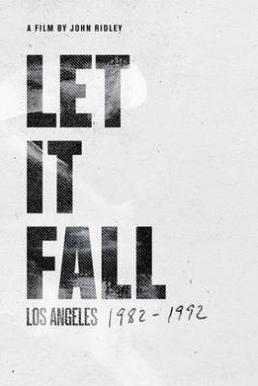
Rodney Glen King was an African American man who was a victim of police brutality. On March 3, 1991, he was severely beaten by officers of the Los Angeles Police Department (LAPD) during his arrest after a high speed pursuit for driving while intoxicated on the I-210. An uninvolved resident, George Holliday, saw and filmed the incident from his nearby balcony and sent the footage, which showed the unarmed King on the ground being beaten after initially evading arrest, to local news station KTLA. The incident was covered by news media around the world and caused a public uproar.

The Los Angeles Police Department (LAPD), officially known as the City of Los Angeles Police Department, is the primary law enforcement agency of Los Angeles, California, United States. With 8,967 officers and 3,000 civilian staff, it is the third-largest municipal police department in the United States, after the New York City Police Department and the Chicago Police Department.

Daryl Hannah is an American actress. She made her film debut in Brian De Palma's supernatural horror film The Fury (1978). She has starred in various films across the years, including as Pris Stratton in Ridley Scott's science fiction thriller Blade Runner (1982) and as Cathy Featherstone in Randal Kleiser's romantic comedy Summer Lovers (1982), as the mermaid Madison in Ron Howard's fantasy-romantic comedy Splash (1984), Roxanne Kowalski in the romantic comedy Roxanne (1987), Darien Taylor in Oliver Stone's drama Wall Street (1987), and Annelle Dupuy Desoto in the comedy-drama Steel Magnolias (1989). In 2005, Hannah won a Saturn Award for her role as one-eyed assassin Elle Driver in Quentin Tarantino's martial arts action film Kill Bill: Vol. 2. In 2015, she appeared in the Netflix series Sense8 as Angelica Turing.

The Decline of Western Civilization is a 1981 American documentary filmed through 1979 and 1980. The movie is about the Los Angeles punk rock scene and was directed by Penelope Spheeris. In 1981, the LAPD Chief of Police Daryl Gates wrote a letter demanding the film not be shown again in the city.
Robert "Robbie" Conal is an American guerrilla poster artist noted for his gnarled, grotesque depictions of U.S. political figures of note. A former hippie, he is noted for distributing his poster art throughout a city overnight using his "volunteer guerrilla postering army".

Joseph Aloysius Wambaugh, Jr. is a best-selling American writer known for his fictional and nonfictional accounts of police work in the United States. Many of his novels are set in Los Angeles and its surroundings and feature Los Angeles police officers as protagonists. He has been nominated for four Edgar Awards, and was named a Grand Master by the Mystery Writers of America.

Daryl Francis Gates was an American police officer who served as chief of the Los Angeles Police Department from 1978 to 1992. His length of tenure in this position was second only to that of William H. Parker. Gates is credited with the creation of SWAT teams alongside fellow Los Angeles Police Department (LAPD) officer John Nelson, who others claim was the originator of SWAT in 1965. Gates also co-founded the Drug Abuse Resistance Education program.

The 1992 Los Angeles riots, were a series of riots and civil disturbances that occurred in Los Angeles County, California, United States, during April and May 1992. Unrest began in South Central Los Angeles on April 29, after a jury acquitted four officers of the Los Angeles Police Department (LAPD) charged with using excessive force in the arrest and beating of Rodney King. The incident had been videotaped by George Holliday, who was a bystander to the incident, and was heavily broadcast in various news and media outlets.
Benjamin Franklin High School (FHS) is a public high school in the Highland Park neighborhood, approximately seven miles northeast of downtown Los Angeles, California, United States. It is part of the Los Angeles Unified School District.
Willie L. Williams was the chief of the Los Angeles Police Department (LAPD) from 1992 to 1997, taking over after chief Daryl Gates' resignation following the 1992 Los Angeles riots. Williams was the first African-American Commissioner of the Philadelphia Police Department and the first African-American Chief of the LAPD. During his term as Chief of the LAPD, he tried to create a positive image of the department and close the rift created between the police and black neighborhoods by the violent arrest of Rodney King in 1991.

Skid Row is a neighborhood in Downtown Los Angeles. The area is officially known as Central City East.
Clay Walker is an American filmmaker.
This article lists examples of the ongoing influence on popular culture of the 1992 Los Angeles riots.
Richard Rayner is a British author who now lives in Los Angeles.

Charles Alan Philips was an American writer and journalist. He was best known for his investigative reporting in the Los Angeles Times on the culture, corruption, and crime in the music industry during the 1990s and 2000s, which garnered both awards and controversy. In 1999, Philips won a Pulitzer Prize, with Michael A. Hiltzik, for their co-authored series exposing corruption in the entertainment industry.

Christopher Wallace, an American rapper known professionally as the Notorious B.I.G., was murdered in a drive-by shooting in the early hours of March 9, 1997 in Los Angeles, California. He was 24 years old.

Let It Fall: Los Angeles 1982–1992 is a 2017 American documentary film directed by John Ridley about the decade preceding and including the 1992 Los Angeles riots. It was produced by Lincoln Square Productions, a subsidiary of ABC News, and was released in theaters in Los Angeles and New York on April 21, 2017. A shorter version aired on ABC on April 28, 2017. A rebroadcast of the film took place on June 16, 2020. The film has received critical acclaim.

LA 92 is a 2017 American documentary film about the 1992 Los Angeles riots, directed by Daniel Lindsay and T. J. Martin. It premiered at the Tribeca Film Festival on April 21, 2017, opened in theaters on April 28, 2017 and aired on National Geographic Channel on April 30, 2017.
James Mincey Jr. died on April 5, 1982, in Los Angeles, California after being placed in a carotid hold while under arrest by the Los Angeles Police Department. While driving home on an early April night in 1982, Mincey Jr. was stopped by police officers for a cracked windshield and was issued a ticket. A few minutes later, a pursuit was initiated after Mincey Jr. failed to stop for the police again. He was acting under the suspicion that the police were harassing him, so he continued driving home. Once home, Mincey Jr. exited his vehicle and was sprayed with "tear gas" in his face. He broke free from the two arresting officer's grips and moved towards his home, while trying to clean his face.












